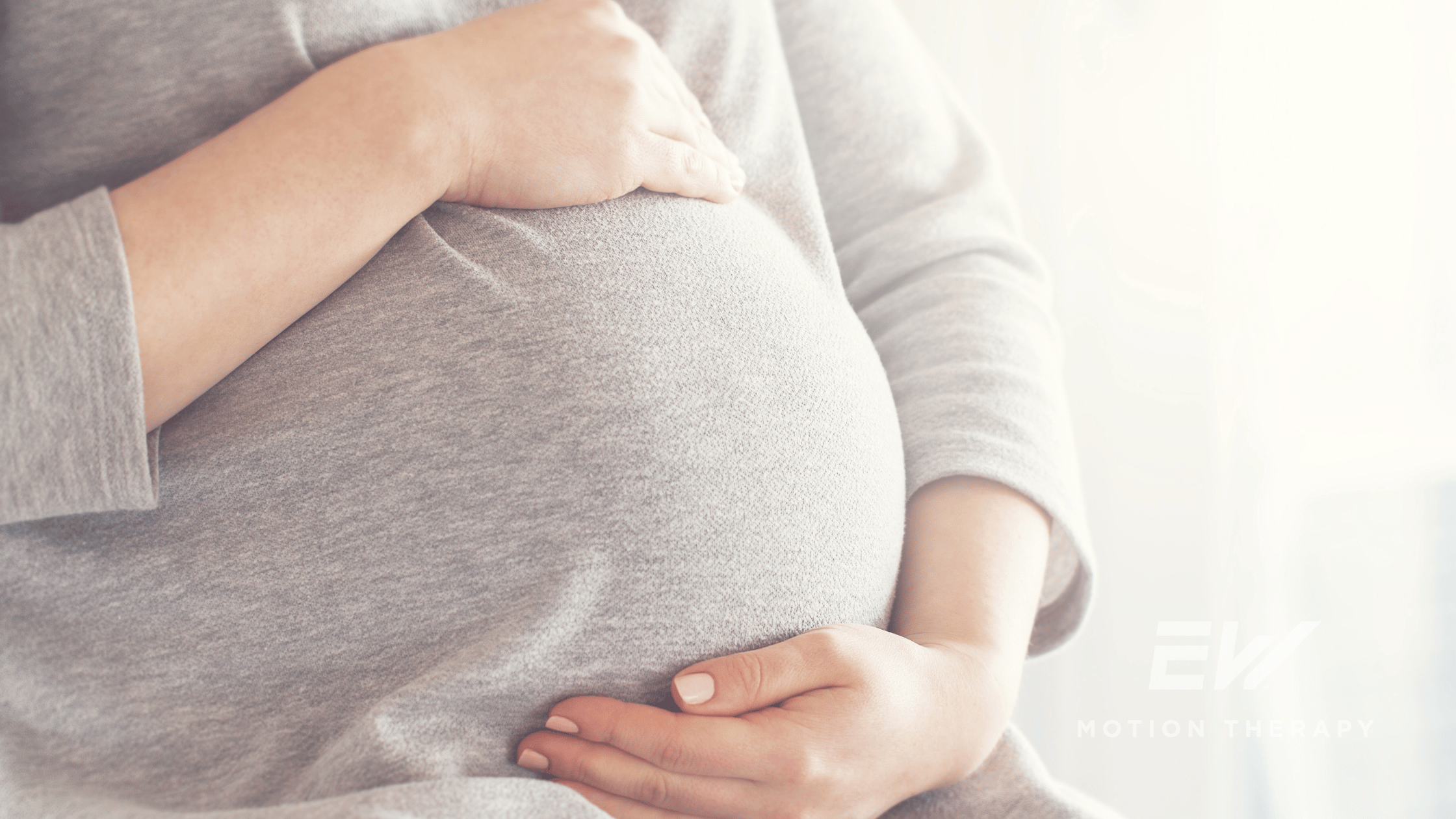SI Joint Pain During Pregnancy: Causes, Symptoms, and Treatment Options

Licensed Physical Therapist, PT, DPT // CFT-L1 // EW Motion Therapy Meadowbrook/280
Pregnancy is a time of profound changes for a woman’s body, both physically and hormonally. While many of these changes are beautiful, some can bring discomfort. One common issue experienced by many pregnant women is sacroiliac (SI) joint pain. This pain can be both frustrating and limiting, often affecting mobility and quality of life during pregnancy. In this article, we'll explore why SI joint pain is common during pregnancy, what symptoms to watch for, and how to manage it, including the role of physical therapy in relieving pain and improving mobility.
Why is SI joint pain common during pregnancy?
The sacroiliac joints are located at the base of the spine, where the sacrum meets the pelvis. These joints are essential for supporting your upper body’s weight and providing stability to the pelvis. During pregnancy, however, several factors make SI joint pain more likely to occur:
- Hormonal changes: One of the major reasons SI joint pain is common in pregnancy is due to the hormone relaxin. Relaxin helps loosen the ligaments and joints in the pelvis, allowing the body to accommodate a growing baby and prepare for childbirth. However, this added flexibility can also cause instability in the sacroiliac joints, leading to pain.
- Postural changes: As the pregnancy progresses, a woman’s center of gravity shifts forward due to the growing belly. This causes changes in posture and gait, placing extra strain on the lower back and SI joints.
- Increased weight and pressure: The additional weight gained during pregnancy adds stress to the joints, including the sacroiliac joints. This extra load can contribute to inflammation and pain in the area.
- Changes in activity level: Many pregnant women modify their daily activities or reduce their physical activity levels during pregnancy. The resulting muscle weakness, particularly in the core and pelvic muscles, can exacerbate SI joint pain.
Symptoms of SI joint pain during pregnancy
SI joint pain during pregnancy is typically felt in the lower back and buttocks, but the pain can radiate to other areas of the body. Recognizing the symptoms of SI joint pain can help you seek appropriate treatment early. Here are some common symptoms:
- Sharp or dull pain in the lower back: The pain often centers on one or both sides of the lower back and can radiate into the buttocks and thighs.
- Difficulty walking or standing: Because the SI joints are responsible for supporting body weight, pain may worsen with activities that involve weight-bearing, such as walking, standing for long periods, or climbing stairs.
- Pain when transitioning positions: Moving from sitting to standing or turning over in bed may trigger sharp pain due to the strain on the SI joints.
- Discomfort when sleeping: Lying on your back or sides can put pressure on the SI joints, making sleep uncomfortable.
- Instability in the pelvis: Some women may feel as though their pelvis is unstable or “wobbly,” making movement difficult.
Treatment options for SI joint pain
While SI joint pain can be uncomfortable, there are many treatment options to help manage the pain and improve mobility. Early intervention is key to preventing pain from worsening as the pregnancy progresses. While SI joint pain is common during pregnancy, you should seek medical advice if the pain becomes severe or interferes with daily activities. In rare cases, intense pain may indicate other conditions, such as sciatica or a herniated disc. Your healthcare provider may refer you to a physical therapist, chiropractor, or other specialist for further treatment.
Physical therapy
Physical therapy is one of the most effective treatments for SI joint pain during pregnancy. A physical therapist can create a personalized plan to strengthen the muscles supporting the pelvis and improve posture. Some standard physical therapy techniques include:
- Strengthening exercises: Physical therapy focuses on strengthening the core, pelvic floor, and lower back muscles to provide better support for the SI joints. Exercises such as pelvic tilts, hip bridges, and side-lying leg lifts are often recommended.
- Stretching and mobility exercises: Gentle stretches for the lower back, hamstrings, and hips can relieve tension and improve joint mobility. Therapists may guide you through safe stretches to relieve pain without putting undue stress on your body.
- Manual therapy: In some cases, a physical therapist may use hands-on techniques, such as massage or joint mobilization, to relieve tension and improve the alignment of the sacroiliac joints.
- Education and posture correction: Physical therapists will teach you proper posture and movement techniques to reduce strain on the SI joints. Simple changes like using supportive cushions or adjusting how you get out of bed can make a big difference in managing pain.
Pregnancy support belts
A maternity support belt can be a simple yet effective tool for alleviating SI joint pain. These belts help stabilize the pelvis by providing gentle compression to the lower back and hips, reducing the strain on the sacroiliac joints. Many women find wearing a support belt during activities like walking or standing for long periods can significantly reduce discomfort.
Heat and ice therapy
Alternating between heat and ice packs can help alleviate SI joint pain by reducing inflammation and soothing sore muscles. Ice packs are beneficial for reducing acute pain and swelling, while heat can help relax tight muscles around the SI joints. Wrap the packs in a towel before applying them to avoid skin irritation.
Prenatal yoga and low-impact exercise
Exercise is essential for managing SI joint pain during pregnancy, but it’s important to choose low-impact activities that don’t worsen the pain. Prenatal yoga can be a great way to maintain flexibility, strengthen muscles, and improve posture. Many prenatal yoga poses focus on opening the hips, stretching the lower back, and building core strength, all of which can reduce SI joint pain.
Walking and swimming are other low-impact exercises that keep you active without placing excessive strain on the sacroiliac joints. Always consult with your healthcare provider before beginning any exercise routine to ensure it’s safe for your pregnancy.
Rest and posture adjustments
Sometimes, the best thing you can do for SI joint pain is simply to rest. Taking short breaks throughout the day, avoiding standing for prolonged periods, and using supportive pillows while sleeping can relieve some of the stress on your SI joints.
It's also helpful to be mindful of your posture throughout the day. When sitting, choose chairs with good lumbar support and consider using a pillow to keep your hips aligned. When standing, try evenly distributing your weight on both legs to avoid placing too much pressure on one side of the pelvis.
SI joint pain is a common and often frustrating part of pregnancy, but the good news is that it can be managed with the right approach. Whether through physical therapy, lifestyle modifications, or the use of support devices, there are many options available to help alleviate the pain. If you are experiencing SI joint pain during pregnancy, consult your healthcare provider and consider working with a physical therapist to develop a plan that ensures a more comfortable and active pregnancy. We love helping our pregnant clients at EW Motion Therapy stay active through every trimester, ensuring they care for themselves as they remain mindful of their baby’s safety. To learn more about women’s health physical therapy, click the button below to download our answers to 20 frequently asked questions.


